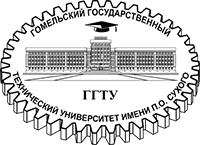В статье рассматривается влияние климатических факторов на энерго- и водопотребление городской системы водоснабжения. Цель исследования – выявить взаимосвязи между температурой наружного воздуха, осадками и нагрузкой на систему водоснабжения для обоснования факторов, необходимых для создания сезонных моделей водопотребления и повышения энергоэффективности водозаборов. Задача научной работы заключалась в проверке выдвинутой гипотезы, согласно которой повышение температуры воздуха приводит к увеличению водопотребления и, как следствие, к росту энергозатрат на работу насосных станций и систем водоочистки. Одновременно предполагалось, что атмосферные осадки будут оказывать противоположное влияние, снижая водопотребление в периоды интенсивных дождей. В работе использован корреляционный анализ для оценки силы и направления связей между температурой воздуха, осадками и параметрами энерго- и водопотребления. Для количественной оценки влияния климатических факторов был применен регрессионный анализ. Метод скользящего среднего использован для сглаживания данных и уменьшения разброса случайных колебаний. Также применялись методы фильтрации и отсечения данных, которые позволили разделить их по температурным порогам и провести отдельные исследования для различных диапазонов. Полученные результаты демонстрируют, что рост энергопотребления тесно связан с увеличением спроса на воду, который возрастает с каждым градусом наружного воздуха. Это объясняется ожидаемым ростом водопотребления на поливы и бытовые нужды в теплые периоды. Температурный фактор выше 25 °C определял 15,8 % водопотребления, что также совпадало с ростом этого вклада и в электропотребление системы (15,6 %). Однако при анализе данных в области отрицательных температур явной связи между температурой и потребностью в воде не наблюдалось. Вместе с тем была выявлена корреляция между температурой и расходом электроэнергии, что связано с дополнительными затратами на поддержание системы водоснабжения в условиях холодного климата. Сделаны выводы о необходимости дальнейшего исследования дополнительных переменных, таких как типы дней недели (рабочие, выходные, праздничные), сезоны года, а также другие социально-экономические факторы, влияющие на водопотребление и энергозатраты. Комплексные результаты работы могут быть использованы для планирования работы водоканалов, управления энергоресурсами и разработки стратегий повышения энергоэффективности в системах водоснабжения.
The article considers the influence of climatic factors on energy and water consumption of the urban water supply system. The purpose of the study is to identify the relationships between outdoor air temperature, precipitation and load on the water supply system to substantiate the factors necessary for creating seasonal models of water consumption and increаsing the energy efficiency of water intakes. The objective of the scientific work was to test the hypothesis, according to which an increase in air temperature leads to an increase in water consumption and, as a consequence, to an increase in energy costs for the operation of pumping stations and water treatment systems. At the same time, it was assumed that precipitation would have the opposite effect, reducing water consumption during periods of intense rainfall. The work used correlation analysis to assess the strength and direction of the relationships between air temperature, precipitation and energy and water consumption parameters. Regression analysis was used to quantitatively assess the impact of climatic factors. The moving average method was used to smooth the data and reduce the spread of random fluctuations. Data filtering and cutting methods were also used, which made it possible to divide them by temperature thresholds and conduct separate studies for different ranges. The obtained results demonstrate that the growth of energy consumption is closely related to the increase in water demand, which increases with each degree of outside air temperature. This is explained by the expected increase in water consumption for irrigation and household needs during warm periods. Above 25 °C, the temperature factor determined 15.8 % of water consumption, which also coincided with the growth of this contribution to the electricity consumption of the system (15.6 %). However, when analyzing data in the area of negative temperatures, no obvious relationship was observed between temperature and water demand. At the same time, a correlation was found between temperature and electricity consumption, which is associated with additional costs for maintaining the water supply system in cold climates. Conclusions are made about the need for further study of additional variables, such as types of weekdays (working days, weekends, holidays), seasons of the year, as well as other socio-economic factors affecting water consumption and energy costs. The comprehensive results of the work can be used for planning the work of water utilities, managing energy resources and developing strategies to improve energy efficiency in water supply systems.






